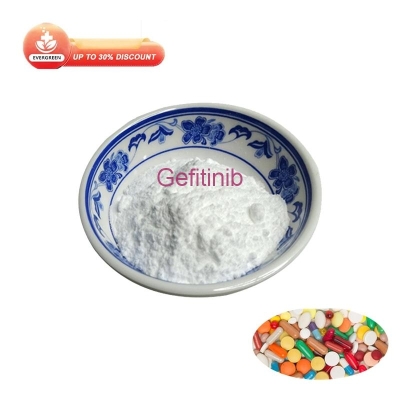-
Categories
-
Pharmaceutical Intermediates
-
Active Pharmaceutical Ingredients
-
Food Additives
- Industrial Coatings
- Agrochemicals
- Dyes and Pigments
- Surfactant
- Flavors and Fragrances
- Chemical Reagents
- Catalyst and Auxiliary
- Natural Products
- Inorganic Chemistry
-
Organic Chemistry
-
Biochemical Engineering
- Analytical Chemistry
- Cosmetic Ingredient
-
Pharmaceutical Intermediates
Promotion
ECHEMI Mall
Wholesale
Weekly Price
Exhibition
News
-
Trade Service
most common neuroendocrine tumors in the human body.
According to serum hormones and immunohistochemistry, it can be divided into 10 subtypes
.
Clinical features and treatment options vary for each subtype
.
The 10-classification method has a certain predictive effect on the prognosis of patients, but the guiding effect is limited in the selection and trial of treatment methods
.
On October 29, 2022, the team of Professor Yao Zhao, Department of Neurosurgery, National Medical Center for Neurological Diseases, Huashan Hospital affiliated to Fudan University, and Professor Ding Chen's team from the Institute of Human Phenome Research / School of Life Sciences, Fudan University, published an online title in Cell Research Integrated proteogenomic characterization across major histological types of pituitary neuroendocrine tumors, which examined genomics, transcriptomics, and transcriptomics in 200 cases of pituitary tumors across all 10 subtypes through multi-omics sequencing.
Proteomics and phosphorylated proteomics have 4 layers of omics
.
Subsequently, combined with the analysis of tumor clinical features and multi-omics data, a 7-type method for pituitary tumors based on tumor molecular characteristics was proposed for the first time, and potential therapeutic targets for each subtype were found
.
All molecular markers and therapeutic targets were validated
in a separate cohort of 750 human pituitary tumors.
Based on this, the research team proposed for the first time in the world a new standard for molecular typing of pituitary tumors with potential clinical treatment guiding value
.
Pituitary neuroendocrine tumor is the most common neuroendocrine tumor in the human body and one of the
most common brain tumors.
The mass effect and excessive secretion of hormones can lead to a variety of clinical symptoms, including decreased vision, galactorrhea, acromegaly, Cushing's syndrome, etc.
, affecting many important organs throughout the body and seriously affecting the quality of life
of patients.
It is a complex disease
involving neurosurgery, endocrinology, obstetrics and gynecology, andrology, ophthalmology, psychiatry, radiology, and radiation therapy.
According to its secreted hormones and pathological staining results, it can be divided into 10 subtypes
, including GH, PRL, TSH, silent PIT1, GN (FSH/LH), silent SF1, ACTH, silent TPIT, Null and Plurihormonal.
Each subtype differs
in clinical features, preferred regimen, and pathologic staining features.
The 10-type method has a certain predictive effect on the prognosis of patients (such as recurrence), but the guiding effect is limited in the selection and trial of treatment methods
.
The authors included 200 pituitary tumors from all 10 subtypes and sequenced
them for whole exons, transcriptomes, proteomes, and phosphorylated proteomics.
Through preliminary cluster analysis, it was found that the molecular characteristics of GN(FSH/LH), silent SF1 and Null were similar, while the tumors of the PIT1 lineage also had certain similarities
.
Subsequently, through joint analysis of the consistency changes of the 4-layer omics, it was found that in tumors of the PIT1 lineage, the increase in the copy number of GNAS can lead to overexpression of GNAS protein, thereby activating downstream cell cycle correlation and promoting tumor proliferation
.
And the mechanism is not exactly the same as the
downstream pathway caused by GNAS mutation.
Further integrating multi-omics data, the research team proposed for the first time a seven-part method for pituitary tumors based on tumor molecular characteristics, and found a subtype of overexpressing EMT pathway, which was more proliferative and aggressive
.
Subsequent in-depth analysis of other molecular subtypes also found their respective molecular characteristics and therapeutic targets: specific high expression of VEGFR-related pathway in SF1/NULLenrich, activation of EGFR-related pathway in TPIT lineage, etc
.
The research team further focused on the immune-related features of each pituitary tumor subtype, and found that in the PIT1 lineage, TSH/Silent PIT1enrich and GHenrich led to high expression of downstream PD-L1 by activating the JAK1/STAT1 pathway, while in EMTpro In the middle, JAK3/STAT6 causes downstream immune cell infiltration
.
This result suggests that a specific immunotherapy regimen
should be selected for the molecular characteristics of each subtype.
Finally, the research team verified the above molecular characteristics and therapeutic targets in another independent cohort of 750 pituitary tumors, and thus proposed a new standard
for molecular typing of pituitary tumors with potential clinical treatment guidance value for the first time in the world.
In summary, this study is the first to integrate large-sample multi-omics data and propose a new standard
for molecular typing of pituitary tumors that can guide subsequent treatment.
This study provides a new idea and preliminary data basis
for the in-depth mechanism exploration of pituitary tumor and clinical drug development.
Dr.
Zhang Fan, Dr.
Zhu Jiajun, Dr.
He Shiman, and Dr.
Ma Chi from the Institute of Human Phenomics, Fudan University, and Dr.
Zhang Qilin, Dr.
Yao Boyuan, Dr.
Qiao Nidan, and Dr.
Ye Zhao from Huashan Hospital affiliated to Fudan University are the first authors of the study; Professor Yao Zhao and Dr.
Qilin Zhang, Department of Neurosurgery, National Medical Center for Neurological Diseases and Huashan Hospital affiliated to Fudan University, and Professor Chen Ding from the Institute of Human Phenome and School of Life Sciences, Fudan University, are the corresponding authors
of this study.
Original link:
style="line-height: 1.
75em;margin-left: 8px;margin-right: 8px;margin-bottom: 0px;">Pattern maker: Eleven
Reprint instructions
【Non-original article】The copyright of this article belongs to the author of the article, personal forwarding and sharing is welcome, reprinting is prohibited without the permission of the author, the author has all legal rights, and violators must be investigated
.







